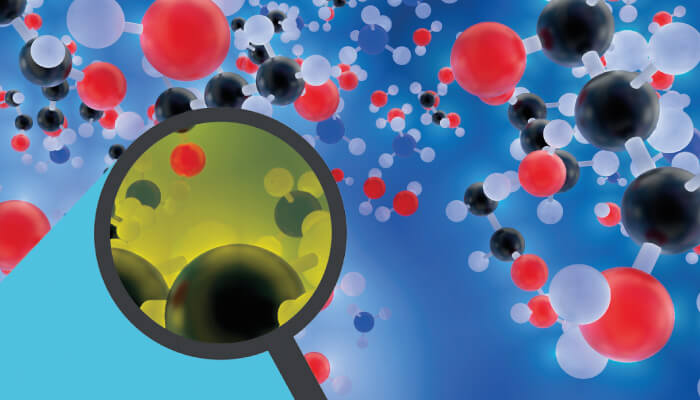Natural products are a common source of drugs (many antibiotics, painkillers, and even cancer drugs are derived from natural products), but before natural products can be exploited, their structures and stereochemistry must be elucidated. And that’s (unsurprisingly) easier said than done.
“Besides the X-ray diffraction, which can only be applied to crystallizable molecules, chemists usually use nuclear magnetic resonance (NMR) spectroscopy for structure determination. Most employed NMR parameters rely on the measurement of protons. But for molecules that only contain few protons or flexible molecules that need more NMR data to define their conformational spaces, conventional proton-based NMR methods may not determine their structure and stereochemistry correctly,” says Han Sun, a researcher at the Leibniz-Forschungsinstitut für Molekulare Pharmakologie (FMP) in Germany.

Another NMR-based parameter – residual chemical shift anisotropy (RCSA) – can accurately determine structure and stereochemistry, but requires specialized instrumentation. But now, Sun and colleagues have developed a method that simplifies the measurement of RCSA to make it more accessible.
“Our experiment involves bringing together natural products with a commercially available peptide – with a sequence of AAKLVFF,” says Xiaolu Li, lead author of the work (1). “Dissolved in methanol, the peptides are transformed into liquid crystals, which gives the natural products a weak orientation in the magnetic field. This particular orientation enables us to measure the RCSA of the molecules as a parameter, which in turn provides accurate information about their structure and stereochemistry.”
The team tested the technique by analyzing spiroepicoccin A – which was isolated from a marine organism that lives at a depth of more than 4500 m. The substance only has a few hydrogen atoms attached to its stereocenters, making it difficult to analyze with conventional NMR, but the new technique was able to successfully elucidate the compound’s structure and stereochemistry.
According to Sun, many pharma companies use residual dipolar coupling and RCSA-based methods to characterize the structure and stereochemistry of drug-like molecules – and have expressed interest in the new technique. Meanwhile, Sun, Li and their colleagues are using the new method to elucidate the structure and stereochemistry of other new marine natural products.
